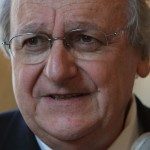Link to Pubmed [PMID] – 15194185
Gene 2004 Jun;335:1-17
There is increasing evidence that DNA duplication is a common and ongoing process that plays a major role in molecular evolution of genomes and that a large fraction of the duplicated gene copies becomes non-functional by accumulation of deleterious mutations. In order to describe this phenomenon, we systematically searched the 6404 intergenic regions (IRs) of the genome of Saccharomyces cerevisiae for traces of coding sequences presenting degenerated but still recognizable sequence similarity with active open reading frames (5823 annotated ORFs). We detected a total of 124 anciently coding regions, or “gene relics”, showing similarity to a total of 149 distinct active ORFs. This set of relics shows a continuum of sequence degeneration from those whose sequence is slightly altered compared to the functional ORF (classically defined as pseudogenes), to those that contains so many deleterious mutations, as to reach the limit of recognition. Gene relics are more concentrated in the subtelomeric regions of the chromosomes, reflecting the high plasticity of these regions. The presence of relics also revealed ancestral duplication events of chromosomal segments that were previously undetected. Some of these segments are intermingled with the more easily recognizable ancestral blocks of duplication, indicating successive duplication events. We present a compilation of all the data available, leading to a total of 278 pseudogenes in the genome of S. cerevisiae.
